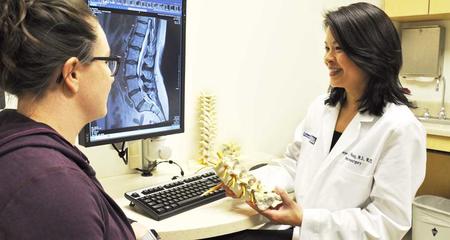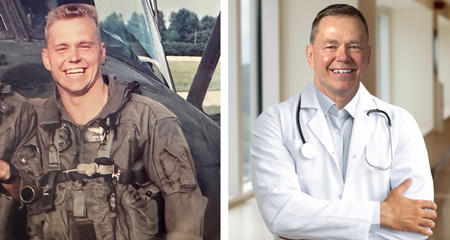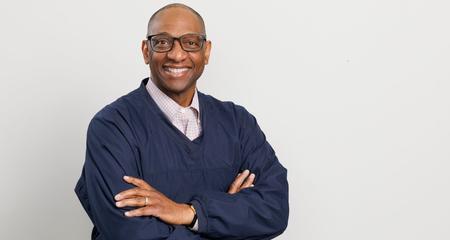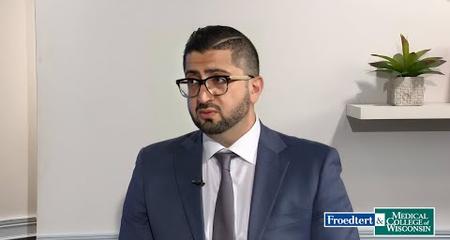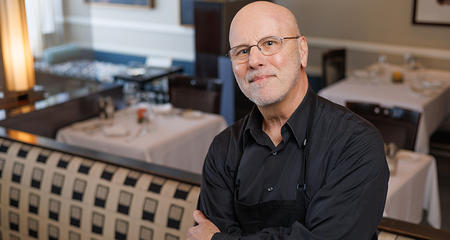
As we age, back pain is one of the most common complaints. Changes to the spine are a normal part of getting older, make us less flexible, and we feel stiff.
Causes of Spinal Stenosis
Joints form bone spurs, or osteophytes, which are bony growths that take up space around our nerves and spinal cord and cause compression. These age-related changes lead to narrowing of the spinal canal, which is a condition called spinal stenosis. In a small number of people, spinal stenosis isn’t caused by aging. Some people are born with a narrow spinal canal, which is called congenital spinal stenosis.
Spinal Stenosis Symptoms
Spinal stenosis can happen in any part of the spine, but most people have stenosis in the lower back, called lumbar spinal stenosis. Symptoms affect the lower part of the body, including the legs and feet. The condition can also affect the neck, which is called cervical spinal stenosis. People with cervical spinal stenosis experience symptoms in their arms and hands.
Spinal stenosis symptoms can come and go, but they are generally worse with activity, such as standing or walking. The following symptoms develop and progress over time.
- Back or neck pain
- Pain that radiates down into the buttocks, legs and feet or into the arms and hands
- Numbness and tingling
- Cramping in the legs and feet or in the arms and hands
People with spinal stenosis feel relief when they bend forward, for example, when they push a shopping cart. This is because bending forward opens additional space for the nerves in the spinal canal. Even a few millimeters of additional space can be enough to make a difference, but incorrect posture can increase back pain in the long run.
A thorough history and physical exam as well as imaging such as X-rays, a CT scan or an MRI can diagnose spinal stenosis.
Spinal Stenosis Treatment
You cannot "cure" or reverse spinal stenosis, but we can help you manage it with conservative treatments such as over-the-counter, anti-inflammatory or pain medications, chiropractic care and physical therapy. Steroid injections may also be useful to make progress easier when patients begin physical therapy. Steroid injections will not cure stenosis and should only be used to temporarily relieve symptoms so patients can be more active.
Physical Therapy for Spinal Stenosis
The purpose of physical therapy is to strengthen the core muscles (abdominals, obliques, lower back and glutes) to better support the bones that keep the body upright. It also helps to increase endurance. If a person is sedentary and deconditioned, it is much more difficult to manage age-related problems in the spine. Physical therapy may also involve time in the pool, which can be very helpful for patients who are already dealing with other problems, such as hip and knee arthritis, or who are severely deconditioned.
Spinal Stenosis Surgery
Surgery for spinal stenosis is an option for people with severe and debilitating symptoms. The procedure for lumbar spinal stenosis is called a laminectomy and involves an incision on the back to access the spine. This procedure has a very high success rate. Surgery for cervical stenosis also has a high success rate. It may involve an incision through the front of the neck or the back, depending on the area of compression.
Seeking treatment with experts in a comprehensive spine care program, such as the SpineCare team with the Froedtert & MCW health network, will offer you the most personalized options for relief. Conservative and surgical treatment options are available through our collaborative team of specialists for continuity of care.
Preventing Spinal Stenosis
Spinal stenosis cannot be reversed, but there are actions you can take to prevent it from progressing. No matter your age, being a healthy weight and maintaining good physical fitness will go a long way. It is also much easier to treat patients for spinal stenosis with conservative options when they are in good physical condition.
- Maintain a healthy weight. The most important prevention measure for spinal stenosis is to maintain a healthy weight because obesity is the number one risk factor. Of the patients we operate on for spinal stenosis, 90% are overweight. Keeping excess weight off helps take the pressure off the joints and tissues and puts less stress on the spine.
- Get regular exercise. Regular exercise (30-40 minutes 3-4 times per week) can help you stay lean. More importantly, it will strengthen the muscles that support your back and neck. For people who already experience back pain, using a recumbent bike puts the spine in a comfortable position while cycling because of the slight reclining position of the bike seat and backrest. Exercising in a pool can help support your joints and strengthen muscles because of the resistance from the water.
- Pay attention to your posture and gait. Spinal stenosis symptoms are worse with activity, but walking with trekking poles can reduce some of the stress on the spine by promoting correct gait mechanics. We studied the impact of trekking poles on gait mechanics extensively, and we've found that gait efficiency improves by up to 30% with the use of poles. Furthermore, body awareness, balance and endurance will be improved. Walking with poles can be especially helpful as you age and can have the most benefit for people who already have hip and knee problems.
Recognized as High Performing by U.S. News & World Report
Froedtert Hospital is recognized by U.S. News & World Report as high performing in three adult specialties and 16 procedures and conditions, including back surgery (spinal fusion).More to Explore
